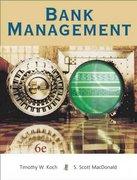Question
Q. 1. Explain in brief the functions of a Finance Manager? Q. 2. Explain various methods of raising fund with their merits and demerits. Q.
Q. 1. Explain in brief the functions of a Finance Manager?
Q. 2. Explain various methods of raising fund with their merits and demerits.
Q. 3. Discuss in detail various factors affecting the dividend policy of a company.
Q. 4. Write short notes on any three : (a) Cash Management (b) Leverage (c) ADR and GDR (d) Under Capitalization (e) Bonus Share
Q. 1. (a) Define the term 'Management'.
Explain the function of [15] management.
(b) Define the term 'Organizational Behaviour'.
Q. 2. Explain 'Maslow's Need Hierarchy Theory' of motivation.
Q. 3. Explain the concept of organizational structure. What are the basis on which departmentation is done? Explain with examples.
Q. 4. What are the different types of conflicts? What is the impact of conflicts on organisational participants?
Q. 5. Explain in depth the significant contribution made by F.W. Taylor towards management.
Q. 6. Define leadership. Explain types of leadership with suitable examples.
Question 11
The figure shows a heat engine (HE) working between two reservoirs. The amount of heat (Q2) rejected by the heat engine is drawn by a heat pump (HP). The heat pump receives the entire work output (W) of the heat engine. If temperatures, T1> T3> T2, then the relation between the efficiency () of the heat engine and t he coeffi ci ent and t he coeffi ci ent of performance (COP) of the heat pump is?
Question 1
A steam power cycle with regeneration as shown below on the T-s diagram employs a single open feedwater heater for efficiency improvement. The fluids mix with each other in an open feedwater heater. The turbine is isentropic and the input (bleed) to the feedwater heater from the turbine is at state 2 as shown in the figure. Process 3-4 occurs in the condenser. The pump work is negligible. The input to the boilder is at state 5. The following information is available from the steam tables?
Question 2
In the Rankine cycle for a steam power plant the turbine entry and exit enthalpies are 2803 kJ/kg and 1800 kJ/kg, respectively. The enthalpies of water at pump entry and exit are 121 kJ/kg and 124 kJ/kg respectively. The specific steam consumption (in kg/kWh) of the cycle is, The pressure ratio across a gas turbine (for air, specific heat at constant pressure, cp = 1040 J/ kg K and ratio of specific heats = 1.4) is 10. If the inlet temperature to the turbine is 1200 K and the isentropic efficiency is 0.9, the gas temperature at turbine exit is?
Question 3
In a steam power plant operating on a ideal Rankine cycle, superheated steam enters the turbine at 3 MPa and 350C. The condenser pressure is 75 kPa. The thermal efficiency of the cycle is ________%. Given data: For saturated liquid, at p = 75 kPa, hf = 384.39 kJ/kg, vf= 0.001037 m3/kg, sf= 1.213 kJ/kgK. At 75 kPa, hfg= 2278.6 kJ/kg, sfg= 6.2434 kJ/kgK At P = 3 MPa and T = 350C (superheated steam), h = 3115.3 kJ/kg, s = 6.7428 kJ/kgK.?
Question 4
The following data pertain to a single stage impulse steam turbine: Nozzle angle = 20 Blade velocity = 200 m/s Relative steam velocity at entry = 350 m/s Blade inlet angle = 30 Blade exit angle = 25 If blade friction is neglected the work done per kg steam is, A steam power plant has the boiler efficiency of 92%, turbine efficiency (mechanical) of 94%, generator efficiency of 95% and cycle efficiency of 44%. If 6% of the generated power is used to run the auxiliaries, the overall plant efficiency is?
Question 5
If one mole of H2gas occupies a rigid container wi t h a capaci t y of 1000 l i t er s and t he temperature is raised from 27C to 37C, the change in pressure of the contained gas (round off to two decimal places), assuming ideal gas behavior, is, The Vander Waals equation of state is {P + (a / c)} (v - b)= RT, where p is pressure, v is specific volume, T is temperature and R is characteristic gas constant. The SI unit of a is?
Question 6
2 moles of oxygen are mixed adiabatically with another 2 moles of oxygen in a mixing chamber, so that the final total pressure and temperature of the mixtures become same as those of the individual constituents at their initial states. The universal gas constant is given as R. The change in entropy due to mixing, per mole of oxygen, is given by?
Question 7
Water has a critical specific volume of 0.003155 m3/kg. A closed and rigid steel tank of volume 0.025 m3contains a mixture of water and steam at 0.1 MPa. The mass of the mixture is 10 kg. The tank is now slowly heated. The liquid level inside the tank, A tank of volume 0.05 m3contains a mixture of saturated water and saturated steam at 200C. The mass of the liquid present is 8 kg. The entropy (in kJ/kgK) of the mixture is ________ (correct of two decimal places) Property data for saturated steam and water are: At 200C [Psat= 1.5538 MPa] vf= 0.001157 m3/kg, vg= 0.12736 m3/kg sfg= 4.1014 kJ/kgK, sf= 2.3309 kJ/kgK?r
Step by Step Solution
There are 3 Steps involved in it
Step: 1

Get Instant Access to Expert-Tailored Solutions
See step-by-step solutions with expert insights and AI powered tools for academic success
Step: 2

Step: 3

Ace Your Homework with AI
Get the answers you need in no time with our AI-driven, step-by-step assistance
Get Started


